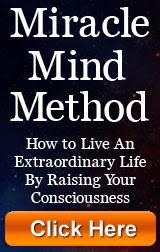The Devious Matrix Called Psychiatry
![]() Jon Rappoport, Guest
Jon Rappoport, Guest
Waking Times
The war on free consciousness
Pushing the individual into a blind alley
Pushing society into a blind alley
Concealed facts exposed
“Psychiatry does more than define mental disorders. It purports to describe actual states of mind, and it coalesces and freezes those descriptions in such a way that people believe these states of mind exist. They don’t. They’re fictions. Fantasies. This is an enormous landscape of consciousness-programming. It’s actually reduction. Like many systems before it, psychiatry tries to reduce the possibilities of wide-ranging free consciousness. Throughout history, people have always been afraid of mind freedom. ‘What will people with free minds do?’ ‘What will society become if people’s minds are free?’ I can tell you: society would change radically, right down to its foundations.”
(The Underground, Jon Rappoport)
Over the past 30 years, my work has always returned to freedom of the individual.
Not only Constitutional freedom and Bill-of-Rights freedom, but liberation of the power of individual thought and imagination and invention. Because those qualities are unpredictable, open-ended, and limitless. This is where long-term revolution begins.
So naturally, I’ve investigated the premier “science” that claims to have the best understanding of the mind: psychiatry.
I was neither surprised nor shocked to discover that psychiatry is a fraud, a pseudoscience.
Yet, this “science” is accorded special treatment and licensure and favored status by governments around the world. Why? Because untold numbers of patients can be diagnosed and drugged with highly toxic substances, and even held against their will in closed wards. Dissidents can be contained. Whole populations can be convinced they are either “mentally healthy” or “mentally ill,” as if those two fictional categories described some highly significant status.
If psychiatry were merely recognized as an experimental hypothesis, and so-called professionals diagnosed one another and applied labels to one another and drugged one another, in order to assess the outcome, as any scientist would, before subjecting the public to his idiosyncratic notions…well, fine. I could understand that.
But of course, this is not where we find ourselves. Psychiatrists are considered lofty authorities. They are called as expert witnesses in criminal trials. Then can, in many cases, arbitrarily force their will on patients. They are called upon by media to render their analyses. They occupy sanctified chairs at universities.
So…with that introduction, let me present information which has not been broadly communicated to the public.
 The bible of the psychiatric profession, the DSM (Diagnostic and Statistical Manual of Mental Disorders), published by the American Psychiatric Association, is now in its 5th edition. It lists some 300 official mental disorders by name, as well as the criteria which allow licensed psychiatrists to diagnose these disorders in patients.
The bible of the psychiatric profession, the DSM (Diagnostic and Statistical Manual of Mental Disorders), published by the American Psychiatric Association, is now in its 5th edition. It lists some 300 official mental disorders by name, as well as the criteria which allow licensed psychiatrists to diagnose these disorders in patients.
And yet, in the DSM, there is not one defining laboratory test for any of those 300 disorders. No blood test, no urine test, no antibody test, no brain scan, no genetic assay.
This is supposed to be a science.
But there are no defining tests. Instead, there are groupings and clusters of behaviors, which committees of psychiatrists have decided constitute specific mental disorders.
Does this seem outrageous? Impossible? Let me prove it to you.
On April 29, 2013, at the National Institute of Mental Health (NIMH) website, Director Thomas Insel, the highest ranking federal mental-health official in the US, published a blog commentary: “Transforming Diagnosis.” Insel wrote (4/29/2013):
“In a few weeks, the American Psychiatric Association will release its new edition of the Diagnostic and Statistical Manual of Mental Disorders (DSM-5)…
“The strength of each of the editions of DSM has been ‘reliability’ – each edition has ensured that clinicians use the same terms in the same ways. The weakness is its lack of validity. Unlike our definitions of ischemic heart disease, lymphoma, or AIDS, the DSM diagnoses are based on a consensus about clusters of clinical symptoms, not any objective laboratory measure.”
![]() Not any objective laboratory measure.
Not any objective laboratory measure.
Again: Not any objective laboratory measure.
That’s called a death sentence.
If anyone paid attention to it.
It’s on the order of the US Attorney General holding a press conference and admitting that every one of its criminal prosecutions, going back 70 years, was based on fraudulent cooked evidence.
If you or your child is ever in the presence of a psychiatrist who gets up on his high horse, makes a diagnosis, and tries to foist drugs on you, you might pay attention to Thomas Insel’s statement, tell the psychiatrist who Insel is, and read his statement out loud, in the sober and somber style of a mortician.
Ditto if you’re dealing with a teacher, school counselor, psychologist, or principal who thinks he knows anything at all about “mental health.”
Courtesy of Dr. Fred Baughman (ADHDfraud.net), I have two more smoking guns.
The first is a letter, dated November 10, 2008, sent from Supriya Sharma, MD, a director general of Health Canada, to a private citizen (name withheld).
Health Canada is the equivalent of the FDA in America.
Dr. Sharma is “responding on the Minister’s behalf”—the Health Minister of Canada, a post roughly comparable to the US Secretary of Health and Human Services.
Here is Dr. Sharma’s key passage:
“For mental/psychiatric disorders in general, including depression, anxiety, schizophrenia, and ADHD, there are no confirmatory gross, microscopic or chemical abnormalities that have been validated for objective physical diagnosis.”
Dr. Sharma is readily admitting that the diagnosis of mental disorders has no basis in actual science.
The second smoking gun is an email sent from the FDA, dated March 12, 2009, to Dr. Baughman. It was written by Donald Dobbs, Consumer Safety Officer, Division of Drug Information, Center for Drug Evaluation and Research. It refers back to Health Canada and smoking gun #1:
“I consulted with the FDA new drug review division responsible for approving psychiatric drug products and they concurred with the response you [Dr. Baughman] enclosed from Health Canada.
“Psychiatric disorders (as Health Canada refers) are diagnosed based on a patient’s presentation of symptoms that the larger psychiatric community has come to accept as real and responsive to treatment.”
Could there be a better description of unscientific consensus?
Psychiatrists can tap dance all they want to about “remarkable progress,” “new breakthroughs,” “the need for more research money,” “chemical imbalances,” but they’re just blowing smoke.
Perhaps psychiatry qualifies for status as a speculative hypothesis, on the level of “Jesus studied healing in Atlantis”— but in what universe does the profession deserve the unqualified backing of the federal government; the ability, under certain conditions, to have citizens placed in psych-ward lockdowns; and the indulgence of courts to hear testimony from “experts” about the mental state of defendants?
Yes, there are certainly people with severe problems. They show all sorts of signs of these problems. But the causes can stem from a variety of circumstances, and any health practitioner worthy of the name would approach each unique patient to find out what is relevant.
 A deep nutritional deficit? A toxic drug or environmental chemical? Physical abuse? Extreme poverty? An ongoing threat to safety? Isolation? Confusion about the future? A disastrously poor education? Hormone imbalance? A praiseworthy refusal to accept cultural norms and the consensus of friends? Unemployment? Etc.
A deep nutritional deficit? A toxic drug or environmental chemical? Physical abuse? Extreme poverty? An ongoing threat to safety? Isolation? Confusion about the future? A disastrously poor education? Hormone imbalance? A praiseworthy refusal to accept cultural norms and the consensus of friends? Unemployment? Etc.
No need to invent 300 so-called mental disorders.
Here are two more pieces of information that attest to the unconscionable fraud that is psychiatry.
Dr. Ronald Pies, the editor-in-chief emeritus of the Psychiatric Times, laid the chemical-imbalance theory of mental disorders to rest in the July 11, 2011, issue of the Times — in Psychiatry’s New Brain-Mind and the Legend of the “Chemical Imbalance” (behind pay wall) — with this staggering admission:
“In truth, the ‘chemical imbalance’ notion was always a kind of urban legend — never a theory seriously propounded by well-informed psychiatrists.”
For decades, the whole basis of psychiatric drug research, drug prescription, and drug sales has been: “we’re correcting a chemical imbalance in the brain.”
The problem was, researchers had never established a normal baseline for chemical balance. So they were shooting in the dark. Worse, they were faking a theory. Pretending they knew something when they didn’t. That’s still the case.
In his 2011 piece in Psychiatric Times, Dr. Pies tries to cover his colleagues in the psychiatric profession with this fatuous remark:
“In the past 30 years, I don’t believe I have ever heard a knowledgeable, well-trained psychiatrist make such a preposterous claim [about chemical imbalance in the brain], except perhaps to mock it…the ‘chemical imbalance’ image has been vigorously promoted by some pharmaceutical companies, often to the detriment of our patients’ understanding.”
Absurd. First of all, many psychiatrists have explained and do explain to their patients that the drugs are there to correct a chemical imbalance.
And second, if all well-trained psychiatrists have known, all along, that the chemical-imbalance theory is a fraud…
…then why on earth have they been prescribing tons of drugs to their patients…
…since those drugs are developed on the false premise that they correct an imbalance?
Here’s another nail in the coffin: It’s a statement made by a prominent expert on an episode of PBS’ Frontline series. The episode was: “Does ADHD Exist?”
PBS Frontline Interviewer: Skeptics say that there’s no biological marker—that it [ADHD] is the one condition out there where there is no blood test, and that no one knows what causes it.
Barkley: (Dr. Russell Barkley, professor of psychiatry and neurology at the University of Massachusetts Medical Center): That’s tremendously naïve, and it shows a great deal of illiteracy about science and about the mental health professions. A disorder doesn’t have to have a blood test to be valid. If that were the case, all mental disorders would be invalid…There is no lab test for any mental disorder right now in our science. That doesn’t make them invalid.
Rarely will you hear a scientist make as bold and definitive a statement against his own interests as that one. And Barkley was so egregiously ignorant about what science is that he spoke with blithe confidence.
Science, as opposed to a preferred special interest, demands confirmation of its assertions. That means physical tests. Definitive tests. You claim a disorder exists in the brain, you present a physical test that confirms it.
Again, you can search the entire DSM, the bible of psychiatry, and try to find one such defining test for a diagnosis of any of the 300 so-called mental disorders, including the old standby, schizophrenia, and you’ll go begging. You’ll come up empty.
Think of the range and influence and power of psychiatry. Think about its partnership with central governments and pharmaceutical companies. Think about its ability to pronounce people insane or mentally ill, and what it can then coercively visit on such persons.
Think about all the politicians and pundits who blithely refer society’s problems to the “need for more psychiatric treatment” and “earlier intervention” (with toxic drugs).
You’re interested in staged events? The entire profession of psychiatry, from top to bottom, is a staged event.
It claims that millions and millions of people, including very young children, are suffering from disorders that have never been proven to exist.
As disturbing as this fact may be to some people, there it is.
Of course, many will respond with disbelief. “A total fraud? That couldn’t be because there are professionals who know science and they say…”
I don’t care what they say. I don’t care what the consensus is. You want to play the game called science? You play by the rules of the scientific method. Otherwise, get out and play another game. Read tea leaves in restaurants. Buy a Ouija board. Interpret the wrinkles on an elephant.
Or just admit you’re doing preliminary research and haven’t found your way.
 But don’t push people around with the claim that you’re engaged in science.
But don’t push people around with the claim that you’re engaged in science.
Here is a mind-boggling twist. One of the great psychiatric leaders, who has been out in front inventing mental disorders, went public. He blew the whistle on himself and his colleagues.
His name is Dr. Allen Frances, and he made VERY interesting statements to Gary Greenberg, author of a Wired article: “Inside the Battle to Define Mental Illness,” (Dec.27, 2010).
Major media never picked up on it in any serious way. It never became a scandal. It managed to fly below the radar.
Dr. Allen Frances is the man who, in 1994, headed up the project to write the then-latest edition of the psychiatric bible, the DSM-IV.
In an April 19, 1994, New York Times piece, “Scientist At Work,” Daniel Goleman called Frances “Perhaps the most powerful psychiatrist in America at the moment…”
Well, sure. If you’re sculpting the entire canon of diagnosable mental disorders for your colleagues, for insurers, for the government, for pharma (who will sell the drugs matched up to the 297 DSM-IV diagnoses), you’re right up there in the pantheon.
Long after the DSM-IV had been put into print, Dr. Frances talked to Wired’s Greenberg and said the following:
“There is no definition of a mental disorder. It’s bullshit. I mean, you just can’t define it.”
BANG.
That’s on the order of the designer of the Hindenburg, looking at the burned rubble on the ground, remarking, “Well, I knew there would be a problem.”
After a suitable pause, Dr. Frances remarked to Greenberg, “These concepts [of distinct mental disorders] are virtually impossible to define precisely with bright lines at the borders.”
Obliquely, Frances might have been referring to the fact that his baby, the DSM-IV, had rearranged earlier definitions of ADHD and Bipolar to permit many more diagnoses, leading to a vast acceleration of drug-dosing with highly powerful and toxic compounds.
Finally, at the end of the Wired interview, Frances went off on a quite intriguing foray, advocating what amounts to a mass-population placebo effect which would justify the existence of the entire psychiatric profession.
“Diagnosis [as spelled out in the DSM-IV] is part of the magic…you know those medieval maps? In the places where they didn’t know what was going on, they wrote ‘Dragons live here’…we have a dragon’s world here. But you wouldn’t want to be without the map.”
 Translation: People need to hope for the healing of their troubles; so even if we psychiatrists are shooting blanks and pretending to know one kind of mental disorder from another, even if we’re inventing these mental-disorder definitions based on no biological or chemical diagnostic tests—since the tests don’t exist and we’re just juggling lists of behaviors—we’re still doing a good thing, because people will then believe there is hope for them; they’ll believe it because we place a name on their problems…
Translation: People need to hope for the healing of their troubles; so even if we psychiatrists are shooting blanks and pretending to know one kind of mental disorder from another, even if we’re inventing these mental-disorder definitions based on no biological or chemical diagnostic tests—since the tests don’t exist and we’re just juggling lists of behaviors—we’re still doing a good thing, because people will then believe there is hope for them; they’ll believe it because we place a name on their problems…
Yes, a name, but also, with that name come the drugs.
For example:
Adverse effects of Valproate (given for a Bipolar diagnosis) include:
- acute, life-threatening, and even fatal liver toxicity;
- life-threatening inflammation of the pancreas;
- brain damage.
Adverse effects of Lithium (also given for a Bipolar diagnosis) include:
- intercranial pressure leading to blindness;
- peripheral circulatory collapse;
- stupor and coma.
Adverse effects of Risperdal (given for “Bipolar” and “irritability stemming from autism”) include:
- serious impairment of cognitive function;
- fainting;
- restless muscles in neck or face, tremors (may be indicative of motor brain damage).
What about ADHD? What about Ritalin?
In 1986, The International Journal of the Addictions published a most important literature review by Richard Scarnati. It was called “An Outline of Hazardous Side Effects of Ritalin (Methylphenidate)” [v.21(7), pp. 837-841].
Scarnati listed a large number of adverse effects of Ritalin and cited published journal articles which reported each of these symptoms.
For every one of the following (selected and quoted verbatim) Ritalin effects, there is at least one confirming source in the medical literature:
- Paranoid delusions
- Paranoid psychosis
- Hypomanic and manic symptoms, amphetamine-like psychosis
- Activation of psychotic symptoms
- Toxic psychosis
- Visual hallucinations
- Auditory hallucinations
- Can surpass LSD in producing bizarre experiences
- Effects pathological thought processes
- Extreme withdrawal
- Terrified affect
- Started screaming
- Aggressiveness
- Insomnia
- Since Ritalin is considered an amphetamine-type drug, expect amphetamine-like effects
- Psychic dependence
- High-abuse potential DEA Schedule II Drug
- Decreased REM sleep
- When used with antidepressants one may see dangerous reactions including hypertension, seizures and hypothermia
- Convulsions
- Brain damage may be seen with amphetamine abuse.
In the US alone, there are at least 300,000 cases of motor brain damage incurred by people who have been prescribed so-called anti-psychotic drugs (aka “major tranquilizers”). Risperdal (mentioned above as a drug given to people diagnosed with Bipolar) is one of those major tranquilizers. (source: Toxic Psychiatry, Dr. Peter Breggin, St. Martin’s Press, 1991)
This psychiatric drug plague is accelerating across the land. See the website SSRI Stories for accounts of people committing suicide and homicide while on (or dangerously withdrawing from) drugs like Prozac, Zoloft, and Paxil.
 And Dr. Frances is somehow let off the hook. He’s admitted in print that the whole basis of his profession is throwing darts at labels on a wall, and implies the “effort” is rather heroic—when, in fact, the effort leads to more and more poisonous drugs being dispensed to adults and children, to say nothing of the effect of being diagnosed with “a mental disorder.” I’m not talking about “the mental-disease stigma,” the removal of which is one of Hillary Clinton’s missions in life. No, I’m talking about MOVING A HUMAN INTO THE SYSTEM, the medical apparatus, where the essence of the game is trapping that person to harvest his money, his time, his energy, and of course his health—as one new diagnosis follows on another, and one new toxic treatment after another is undertaken, from cradle to grave. The result is a severely debilitated human being (if he survives), whose major claim to fame is his list of diseases and disorders, which he learns to wear like badges of honor.
And Dr. Frances is somehow let off the hook. He’s admitted in print that the whole basis of his profession is throwing darts at labels on a wall, and implies the “effort” is rather heroic—when, in fact, the effort leads to more and more poisonous drugs being dispensed to adults and children, to say nothing of the effect of being diagnosed with “a mental disorder.” I’m not talking about “the mental-disease stigma,” the removal of which is one of Hillary Clinton’s missions in life. No, I’m talking about MOVING A HUMAN INTO THE SYSTEM, the medical apparatus, where the essence of the game is trapping that person to harvest his money, his time, his energy, and of course his health—as one new diagnosis follows on another, and one new toxic treatment after another is undertaken, from cradle to grave. The result is a severely debilitated human being (if he survives), whose major claim to fame is his list of diseases and disorders, which he learns to wear like badges of honor.
Thank you, Dr. Frances.
Psychiatry. Not a science.
It pretends to be.
By any definition, that makes it a hoax.
Imagine this: “Mrs. Jones, your son has a heart-valve problem. How do I know? A few colleagues and I looked at his eyebrows, got together over drinks, and decided we should wheel him into surgery right away. Diagnostic tests? Why no. We don’t test. We chew the fat. We concur. We collude.”
In the arena of “mental health,” that’s the method of psychiatry.
If you feel confident that new frontier research will lead to a better system, look up some of the brain-projects DARPA, the technology arm of the Pentagon, is forwarding.
Here is one: sdtimes, February 17, 2015, “DARPA’s Brain interface…”:
“The U.S. Defense Research Projects Agency (DARPA) announced it is developing a brain interface to inject images directly into the human visual cortex via a ‘cortical modem’ chip implanted in the brain.
“…DARPA Biological Technologies chief Phillip Alvelda, the project’s lead scientist, explained that the implant is the size of two stacked nickels. The direct neural interface would eliminate the need for augmented or virtual reality glasses or headsets. The technology is in early development, currently with the ‘visual fidelity of something like an early LED digital clock,’ according to Alvelda.”
In other words, this research is aimed at altering human perception in real time. You are looking at X in the physical world, but you’re seeing Y. And the programmers decide what Y will be.
From there, researchers will surely try to accomplish the same feat with memories.
These scientists are working for the Pentagon. What could you possibly worry about?
Instead of utilizing the enormous amount of coercive programming outlined in Orwell’s 1984, an alteration closer to the source (the brain) is performed.
Now you see it, now you don’t.
Under this program, what faculty would be dumped at the side of the road, like some useless appendage that might, at one time, have been considered useful?
Imagination.
What need for it now, when programmers can change, at will, within the visual cortex, what people see?
“Yes, at one time we had psychiatry, which, to be frank, was an absurd cartoon of a science. But we did manage to codify it and license it under the aegis of government, which was the real accomplishment. It gave us considerable control over the population. Then we took a natural next step. We applied far more precision to the study of the brain, and we moved that research from civilian government agencies into the military, where it truly belongs. Programming the brain in great detail is too important to be left in the hands of people who retain some shred of conscience…”
Forewarned is forearmed.
(To read about Jon’s mega-collection, The Matrix Revealed, click here.)
About the Author
The author of three explosive collections, THE MATRIX REVEALED, EXIT FROM THE MATRIX, and POWER OUTSIDE THE MATRIX, Jon Rappoport was a candidate for a US Congressional seat in the 29th District of California. He maintains a consulting practice for private clients, the purpose of which is the expansion of personal creative power. Nominated for a Pulitzer Prize, he has worked as an investigative reporter for 30 years, writing articles on politics, medicine, and health for CBS Healthwatch, LA Weekly, Spin Magazine, Stern, and other newspapers and magazines in the US and Europe. Jon has delivered lectures and seminars on global politics, health, logic, and creative power to audiences around the world. You can sign up for his free emails at NoMoreFakeNews.com or OutsideTheRealityMachine.
Like Waking Times on Facebook Follow Waking Times on Twitter
This article is offered under Creative Commons license. It’s okay to republish it anywhere as long as attribution bio is included and all links remain intact.
~~ Help Waking Times to raise the vibration by sharing this article with friends and family…
